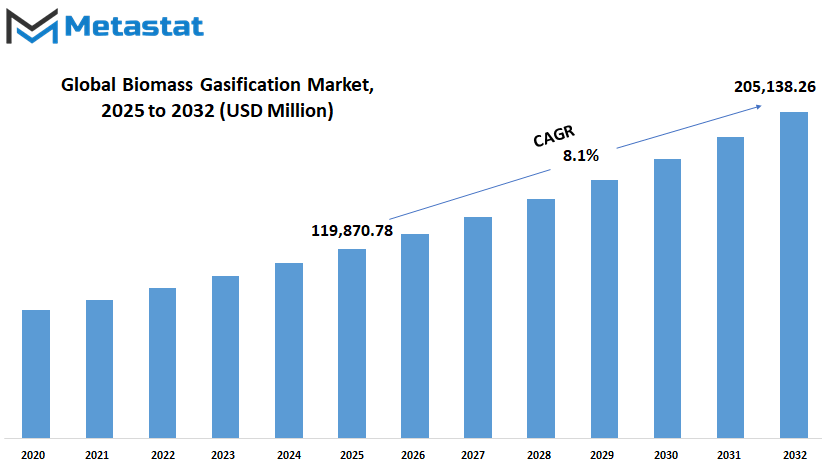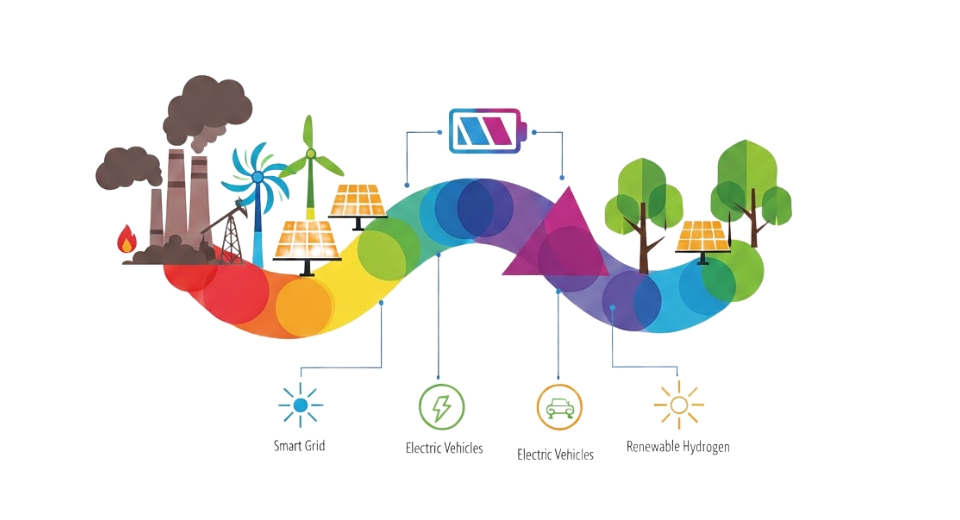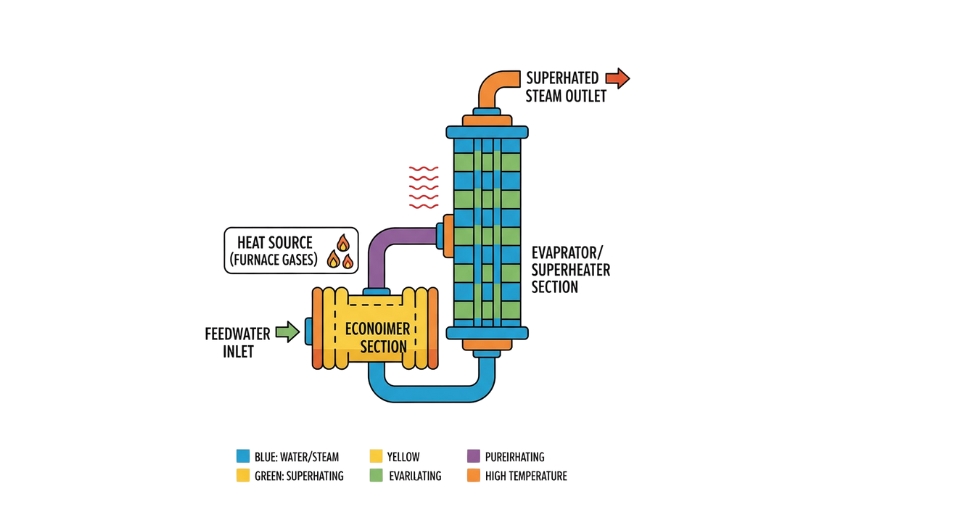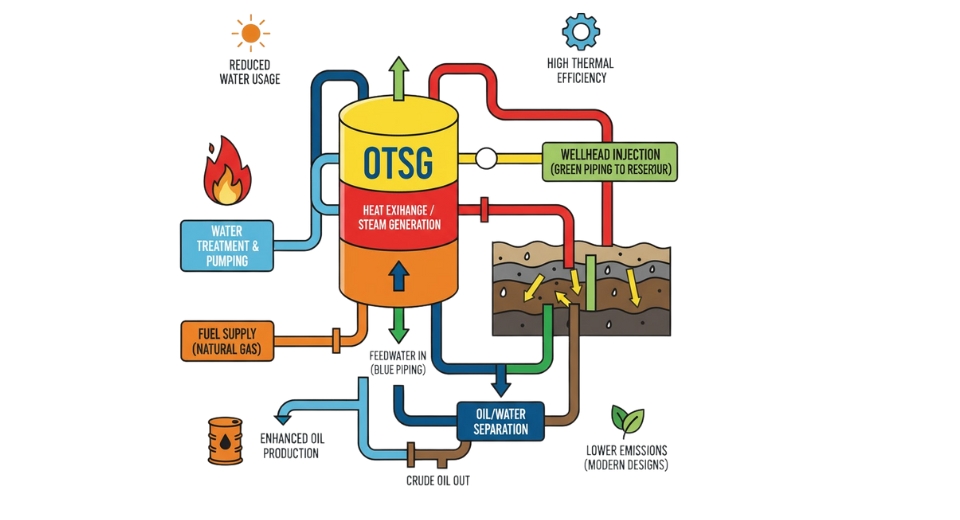MARKET OVERVIEW
The global biomass gasification market which holds a critical component of the industry and helps define sustainable energy solutions by converting organic materials into a valuable gas mixture through a thermochemical process. With continued innovation and a concern for dependency on fossil fuel and carbon emissions, biomass gasification has been one of the highly efficient alternatives in the generation of energy. This is the process of breaking down biomass material such as agricultural residues, wood wastes, and organic municipal wastes under controlled oxygen-limited conditions where syngas can be produced to power production, heat generation, or even the manufacture of biofuel.
The market operates in a very niche industry. The science, technology, and infrastructure continue to evolve and develop for improving efficiency and scale. Biomass gasification has found a place among the emergent solutions as industries look to reduce their carbon footprint and governments introduce stringent policies on renewable energy. Further advancement in gasification technology is expected to bring efficiency levels up across this fuel-gas process, making the whole more economically viable and competitive. Increased investments in bioenergy projects and friendly regulatory frameworks will encourage growth in this market.
Regional difference has much to do with this market dynamic. Countries that have plenty of biomass resource, including North America, Europe, and Asia-Pacific, invested much in developing leading-edge gasification plants. This cutting-edge technology appeals especially to emerging economies around Southeast Asia and Africa to ease up on their energy shortages and reduce dependency on traditional fossil fuels. government incentives and subsidies supplement the increasing growth of biomass gasification, an attractive investment for companies looking to diversify their energy portfolios.
The technology landscape of this industry is evolving continually, as research is constantly being done to find ways of process efficiency enhancement and cost reduction in operations. Advancements in reactor design, feedstock preprocessing, and gas cleanup methods will streamline the entire process. Hybrid gasification systems, which integrate biomass with other renewable energy sources, are likely to gain more popularity in the coming years and offer improved stability and energy yield. In addition, artificial intelligence and automation will be integrated into biomass gasification plants to optimize performance through real-time monitoring and predictive maintenance.
Still, some drawbacks are there, which may limit its progress in the global biomass gasification market. The availability and variability of feedstock are the concerns, with different types of feedstock offering different compositions of syngas; hence, the gasification technologies need flexibility. Infrastructure development and initial capital investment also become the barriers for regions where the bioenergy adaptation is still at its infancy stage. Still, continuance meetings are going on among such industrial players and research institutions to demolish those hurdles toward bringing out this adaptation more widely across the globe.
Policy support, technological advancements, and the increasing need for sustainable energy alternatives will drive the future of the global biomass gasification market. With the increasing recognition of the benefits of biomass-derived syngas, demand is expected to increase further, leading to more investments in research and development. It is also likely that the transition toward a circular economy would enforce the use of waste biomass for energy generation, enforcing the role of gasification as a component in sustainable energy strategies. With continuous development and innovation, this market will increase to be included in the portfolio of renewable energy for the world.
Global biomass gasification market is estimated to reach $205,138.26 Million by 2032; growing at a CAGR of 8.1% from 2025 to 2032.

GROWTH FACTORS
As has been seen throughout, the world will continue putting forth effort and interest in attaining renewable solutions, which gives room for significant increases in biomass gasification going into the coming years. Most countries are not depending on fossils to power major projects, an increase in a good adoption rate for biomass gasification technology as governments and businesses cut back significantly on fossil consumption. Biomass gasification converts organic material into clean energy and provides a friendly alternative environment for its applications in various sectors. As concerns about carbon emissions and climate change continue to rise, the global biomass gasification market will probably experience steady expansion, driven both by regulatory support and technological advancement. A key driver for this growth is the increasing demand for renewable energy.
Most countries have set challenging targets for lowering carbon footprints, and this has consequently prompted investments in biomass gasification projects. Energy independence has also been a factor, as countries seek to lessen reliance on imported fuels. Improved efficiency through developments in gasification technology makes it also viable and cost-effective. With increased research and development, the process is becoming more refined, ensuring better energy conversion rates and less waste production. However, some challenges may slow down market expansion. The major barrier for most companies and governments is the high initial investment costs.
The setting up of a biomass gasification plant requires much capital, although the long-term benefits are promising. Not all organizations can afford the upfront expenses. Besides that, the readiness and quality of feedstock have a bearing upon the efficiency of gasification. Biomass consists of agricultural waste, wood wastes, and various organic residues. The sources would have to be gathered and refined, which involves additional operational expenses. Without good supply chain management, it is challenging to provide a steady feedstock supply in the market that may negatively influence growth. Yet, there lies enormous potential for future opportunities in the market. Growing interest in circular economies, where waste materials are reused for energy generation, will further spur the growth of biomass gasification. Many industries are now looking for the means to minimize waste while at the same time generating energy. This technology comes in handy with its alignment towards sustainability goals.
Incentives, subsidies, and supporting policies from the government will increase investment in the sector. With continued technological innovation that increases gasification efficiency, costs will decrease over time, allowing a wider variety of industries to take advantage of the technology. In the future, the global biomass gasification market is expected to grow steadily as awareness about the environment and renewable energy improves. Owing to continuous research and favorable policies, this technology is expected to take a key position in the world's transition to cleaner energy sources.
MARKET SEGMENTATION
By Source
The global biomass gasification market is booming with increasing demand for renewable sources of energy and sustainable waste management. In 2025, the industry value was humongous for the various types of wastes: farm and animal waste at USD 46,079.84 million, wood and forest waste at USD 28,744.50 million, animal and animal manure at USD 23,823.23 million, and municipal waste at USD 12,475.39 million. The above figures show the different types of biomass that generate value under this market.
The biomass gasification market is growing, with more and more space available for further expansion. Biomass feedstocks that have been found in ample abundance-including agricultural residues, forest byproducts, and organic municipal waste-provide a steady supply for gasification processes. Governments across the globe are initiating steps to increase bioenergy production, considering that there is a potential for saving on greenhouse gas emission while promoting independence in energy production. For instance, support policies directed toward developing combined heat and power plants in rural areas are a strong driver for the growth of the market.
Technological improvements create the future of the biomass gasification market. In fact, advancements in the designs of gasifiers are improving their efficiency and scalability: fluidized-bed gasifiers are to increase significantly, particularly as this can take up a broad range of types of biomass, whereas large power generation projects have their applications best met with it.
In addition, the flexibility of biomass gasification goes beyond power generation. Increasingly, it's used to produce biofuels, chemicals, and hydrogen. This diversification offers the possibility of market expansion in responses to the rising demand for sustainable alternatives in transportation and industrial applications.
The global biomass gasification market continues on an upward trajectory with favorable government policies and significant technological advancements. The emphasis on sustainable energy solutions is growing globally, and, indeed, as the world continues to seek alternatives from fossil fuels toward a greener, more sustainable future, biomass gasification is an attractive pathway forward.
By Gasifier Technology
The global biomass gasification market will grow because the world needs alternative sources of energy that are clean. Concern over climate change, coupled with depletion of fossil fuel, is encouraging industries and governments to look into sustainable sources of energy. Among these solutions is biomass gasification, an effective method for turning organic material into energy. This process reduces waste, providing renewable energy that reduces carbon emissions. In addition, progress toward more extensive greener energy policies and advanced technologies are expected to expand this market in the near future. Gasification technology is at the heart of how biomass is converted into energy. There exist several types of gasifiers. Different types are applied for their unique advantages in different applications.
The oldest and the simplest fixed bed gasifier, which suits small-scale application, is made in such a way that allows the biomass to pass through the reaction zones; this way, gas production happens gradually. Although these systems are relatively less complicated to operate and maintain, problems associated with tar formation and variable fuel quality can sometimes emerge. The fluidized bed gasifier, in fact, is more complicated and thus industrial applications make good use of the same.
Its efficiency in making sure fuel and air mixing to ensure an ideal reaction condition means that a good uniformity occurs. These have flexibilities regarding other types of biomasses that they process, thereby highly suitable for larger-scale productions of energy. Industries that continually look for options with less emissions and are economically cheaper are probable to increase applications for fluidized bed gasifiers. A step further in design for applications needing even higher efficiencies is the entrained flow gasifier. Since it operates under high temperatures, it produces very clean gas having less byproducts. Therefore, it is widely applied in large projects because of diverse feedstocks and reliable output. Its higher costs limit their use in smaller facilities.
Apart from these, other gasification technologies are coming up, and such alternatives become available for specific needs. Further development and research would be foreseen for the refinement of existing systems that would be efficient and environmentally friendly. Innovations in gasification would be of particular importance when global demand rises for renewable energy.
The global biomass gasification market will emerge with more positive projections because government entities and the private sectors would see to increasing these sustainable solutions by investment in those fields. A growing source, along with high advancement, due to knowledge development regarding concern from nature in regards to using carbon products that contain less gas due to air. Improvement, more affordable rate with large consumption amongst various types of industries ensure increased market during after time period.
By Application
The global biomass gasification market is very promising and expected to grow with increasing demand for renewable sources of energy and reducing gas emissions. Biomass gasification is a process that converts organic materials, for example, agricultural waste, forestry residues, and municipal solid waste, into a gaseous fuel known as synthesis gas or syngas. This syngas can be used for applications such as power generation, chemical production, transportation fuels, hydrogen generation, ethanol, and biochar.
Biomass gasification in power production is an option for the utilisation of fossil fuels in future. Organic wastes can be reformed into syngas so that there can be a potential renewable source for electricity generation, which helps the management of wastes and ensures more energy security for the reduction in the usage of non-renewable resources.
Biomass gasification has also helped the chemical industry. Syngas is used as feedstock in producing chemicals, removing the industry from the conventional fossil fuel-based processes. This reduces dependence on fossil fuels, which contributes to environmental sustainability, and propels further research into developing greener methods in chemical production.
In the transport sector, it opens the doors for cleaner fuels in biomass gasification. It is possible to convert syngas into transport fuels as a substitute for gasoline and diesel. It is crucial to transition into reducing emissions in the transport sector while encouraging the use of renewable energy sources.
Another interesting application is biomass gasification for hydrogen production. Hydrogen is a clean carrier of energy; it has lots of potential application in transport, power generation, and many others. Producing hydrogen from biomass is renewable, sustainable, and helps to lower carbon emissions within the globe's efforts.
Ethanol production by biomass gasification is also an area that has been in focus. Syngas obtained from biomass can be used for ethanol production as it is commonly utilized as a biofuel. The process also allows for sustainable alternatives to conventional processes of ethanol production, responding to the energy market's ever-increasing need for biofuels.
Biochar, being a product of gasification, has a number of environmental benefits. For example, biochar can be used to improve soil health and fertility. This is by acting as an amendment to soil, thereby contributing to carbon sequestration through its role in locking carbon into soils.
Biomass gasification is the most versatile and sustainable way to produce energy, as well as utilize resources. Its application across different sectors proves that it will be useful in solving environmental issues and achieving a more sustainable future.
|
Forecast Period |
2025-2032 |
|
Market Size in 2025 |
$119,870.78 million |
|
Market Size by 2032 |
$205,138.26 Million |
|
Growth Rate from 2025 to 2032 |
8.1% |
|
Base Year |
2025 |
|
Regions Covered |
North America, Europe, Asia-Pacific, South America, Middle East & Africa |
REGIONAL ANALYSIS
The global biomass gasification market is spreading across regions with each contributing to its growth in its own unique manner. With the soaring demand for cleaner energy, different geographical areas are seeing an increase in adoption on account of government policies, technological advancements, and increasing focus on sustainable energy sources. It shows that in the future scope of the global biomass gasification market, North America, Europe, Asia-Pacific, South America, and the Middle East & Africa all play very different roles, each representing various challenges as well as opportunities. The three countries that share North America-the U.S., Canada, and Mexico-all work towards cutting reliance on fossil fuels.
Among them, the U.S. takes the lead with a significant number of research efforts focused on optimizing biomass gasification to achieve maximum efficiency with low costs. With its natural forest resources, Canada has much to exploit the potential of using waste biomass; for Mexico, it is just another step closer toward long-term sustainability.
Europe is on the most advanced stage of using renewable energy. The UK, Germany, France, and Italy are the most proactive countries when it comes to biomass gasification projects. Strict environmental laws, coupled with very aggressive carbon neutrality goals, keep the market booming in this region. Germany is more of a global leader in renewable technologies, and France and Italy are scaling up investments in bioenergy as a supplement to their renewable power sources. Asia-Pacific emerges as a great player in the market, largely driven by industrialization and growth in energy usage.
India and China, besides Japan and South Korea, also recognize the fact that their diversification of their energy mix can only be brought about by ensuring biomass gasification to reduce reliance on coal, especially for the world's biggest energy consumer-China. Indian agricultural waste is an important asset still to be converted into cleaner energy. Japan and South Korea are developing advanced systems that can further improve efficiency and scalability. Biomass feedstock is in adequate supply in South America, and Brazil and Argentina are regions expected to show promising growth in markets.
Brazil is the global leader in biofuels and now explores gasification as an alternative to traditional use of biomass. Argentina is highly agrarian; there are tremendous opportunities for this country to make waste to energy a means to fulfill the target for renewable energy. The interest for GCC, Egypt, and South Africa biomass gasification forms a significant portion of the total pursuit toward the energy diversification front of those countries, with the rest largely comprising fossil fuel consumption, however an increased desire toward ensuring a future in line with sustainable models. Biomass-based energy is a leading focus area of South Africa while it tries to reduce its consumption of coal due to power shortage.
Going forward, it is expected to continue with its advancement, with regions using natural resources and technology to expand its biomass gasification. The cleaner energy push with policy support would propel further take-up, putting this sector on the essential component of the transition of global energy.

COMPETITIVE PLAYERS
The global biomass gasification market is going to witness a significant change in the years to come with the help of technological advancements, sustainability initiatives, and global biomass gasification market competition. Biomass gasification, which converts organic materials into a clean and efficient energy source, has received a lot of attention because it is seen as one of the promising ways to reduce reliance on fossil fuels and carbon emissions. As governments worldwide and industries now focus on finding renewable energy, the leading competitors in this segment are looking towards efficiency, scaling, and low cost to become competitive.
Key players in the sector include Several established as well as nascent companies make innovation possible for this sector GE Power company is one among the leading groups in the area of energy by using its excellence in developing efficient gasification with the help of existing power systems. Ankur Scientific Energy Technologies focuses on compact and modular gasification systems, making the technology accessible to industries and communities of varying scales. ANDRITZ AG and Valmet Corporation are at the forefront of integrating automation and digitalization into biomass gasification processes, enhancing operational efficiency and reducing costs. Meanwhile, Kawasaki Heavy Industries is developing large-scale gasification systems aimed at industrial applications, catering to the growing demand for high-capacity renewable energy solutions. Companies like Enersol Biopower Pvt. Ltd., and BIOS BIOENERGIESYSTEME GmbH, are focusing their efforts on product-specific solutions made for specific kinds of biomass feeds, which convert the feed maximally with lesser waste.
Companies like Vølund A/S (Babcock & Wilcox Vølund ) are increasing research in areas to improve on the efficiency factor of gasification plants, adapting them to utilize different types of biomass. The Chanderpur Group, with the help of their engineering prowess, is developing tough yet economical gasification systems capable of use both in rural as well as in industrial applications. Sierra Energy offers innovative FastOx gasification technology, in an effort to end landfill waste and create clean fuels and energies. EQTEC plc and Spanner Re² GmbH are concentrating on decentralized energy systems, thus developing gasification as a feasible and sustainable option for small-scale industries and off-grid locations.
The competition between the key players will be high since demand for clean energy solutions will continue to grow. Companies will invest in research and development into improving the efficiency of gasification, discovering new feedstocks, and implementing artificial intelligence to provide real-time monitoring and optimization. Future breakthroughs may bring the cost and scale of gasification systems to more affordable and achievable levels for wider adoption in all industries and geographies.
Increasing stringent rules on sustainability, businesses in the global biomass gasification market will be required to align their strategies with carbon reduction goals across the globe. The landscape in the global biomass gasification market is changing and has opportunities in collaboration and technology break-through and extended market coverage such that clean energy will remain a viable option and sustainable choice for the future.
Biomass Gasification Market Key Segments:
By Source
- Agricultural Waste
- Forest Waste
- Animal Waste
- Municipal Waste
By Gasifier Technology
- Fixed Bed Gasifier
- Fluidized Bed Gasifier
- Entrained Flow Gasifier
- Others
By Application
- Power Generation
- Chemicals
- Transportation fuels
- Hydrogen Generation
- Ethanol
- Biochar
Key Global Biomass Gasification Industry Players
- GE Power
- Ankur Scientific Energy Technologies
- ANDRITZ AG
- Valmet Corporation
- Kawasaki Heavy Industries
- Enersol Biopower Pvt.Ltd
- BIOS BIOENERGIESYSTEME GmbH
- Vølund A/S (Babcock & Wilcox Vølund)
- Chanderpur Group
- Sierra Energy
- EQTEC plc
- Spanner Re2 GmbH
WHAT REPORT PROVIDES
- Full in-depth analysis of the parent Industry
- Important changes in market and its dynamics
- Segmentation details of the market
- Former, on-going, and projected market analysis in terms of volume and value
- Assessment of niche industry developments
- Market share analysis
- Key strategies of major players
- Emerging segments and regional growth potential








 US: +1 3023308252
US: +1 3023308252






